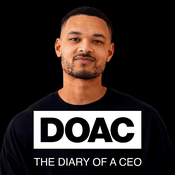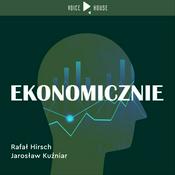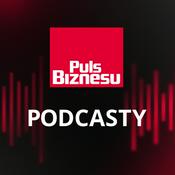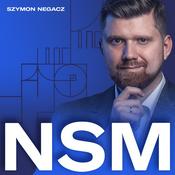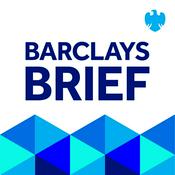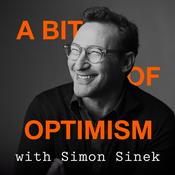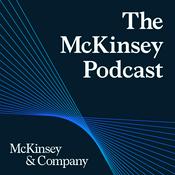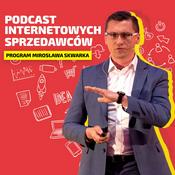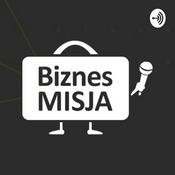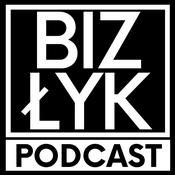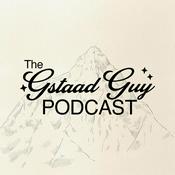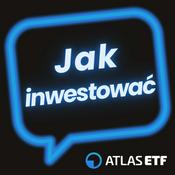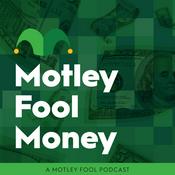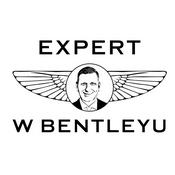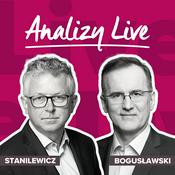Chain of Learning: Leadership Strategies for Continuous Improvement and Transformational Change
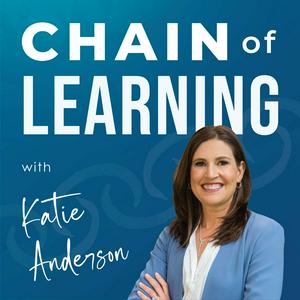
64 odcinków

63| Close the Sustainability Execution Gap: How Leaders Turn Intent into Action [with Rose Heathcote]
07.01.2026 | 39 min.
When you hear the word sustainability, what comes to mind first?If it’s recycling, you’re not alone. But sustainability is far bigger—and more complex—than end-point solutions that address the symptoms of deeper problems. As this episode reveals, sustainability efforts—like many major transformations, including lean—don’t stall because leaders don’t care. They stall because of an execution gap: the gap between what organizations say matters and what actually shows up in daily work, decisions, and priorities.In this episode of Chain of Learning, I’m joined by Rose Heathcote, sustainability expert, lean adviser, and author, to explore sustainability as a leadership and transformation challenge, not just an environmental one.Together, we discuss why sustainability often lives in strategy decks and slogans, but struggles to take root in everyday work, and how leaders can shift their focus upstream to close that gap: to how work is designed, how problems are framed, and how people learn to see new kinds of waste and impact.This conversation goes beyond sustainability to address a pattern that shows up in any transformation—lean, AI-enabled change, or building a people-first learning organization. If you’re working to close the gap between intention and execution, this episode offers perspective and practical starting points for leading meaningful change that lasts.You’ll Learn:What sustainability really means—and why it’s often treated as an aspiration instead of embedded in daily workWhat the sustainability execution gap is, and why it mirrors lean and culture-change failuresWhy shifting problem-solving upstream—from symptoms to root causes—is critical for creating lasting impactHow lean thinking and problem-solving skills enable sustainability and organizational transformation when paired with influence and change leadership skillsWhy speaking the language of business matters for gaining leadership buy-in—and how AI can be used as a thinking partner to support systems thinking and better decisionsABOUT MY GUEST:Rose Heathcote is a speaker, adviser, and Chartered Environmentalist who works at the intersection of Lean thinking and sustainability. She is the founder of Thinking People and the author of "Green Is the New Gold." With decades of experience supporting organizations across industries and regions, Rose focuses on helping leaders move sustainability from aspiration to everyday practice through systems thinking, problem-solving, and people-centered change.IMPORTANT LINKS:Full episode show notes with links to other podcast episodes and resources: ChainOfLearning.com/63 Check out my website for resources and ways to work with me KBJAnderson.comConnect with Rose Heathcote: linkedin.com/in/rose-heathcote Follow me on LinkedIn: linkedin.com/in/kbjandersonDownload my free KATALYST™ Change Leader Self-Assessment: KBJAnderson.com/katalyst Learn more about Rose’s book, “Green is the New Gold”: learn.thinking-people.co.uk/courses/green-is-the-new-gold Learn more about my Japan Leadership Experience: kbjanderson.com/japantrip TIMESTAMPS FOR THIS EPISODE:01:04 Why the real challenge with sustainability starts with where the conversation begins02:39 A broader definition of sustainability meeting the needs of people, planet, and future generations04:16 Why people mistake sustainability for “recycling”05:54 The execution gap lean leaders keep running into07:43 A real-world example: when “people first” and sustainability don’t show up in the metrics09:58 Important shifts leaders must make to close the execution gap11:26 Seeing waste, energy loss, and impact through a green lens14:06 Using AI as a thinking partner, not a replacement15:16 The skills leaders must develop in an AI-driven world16:41 How multidisciplinary thinking led to a smarter, more sustainable solution19:19 Why sustainability requires systems thinking across the value chain20:23 How to make progress towards big challenges23:05 The meaning of the Japanese concept, “sanpo yori” and “yanpo yori” for goodness in four ways and happiness for the long term view24:33 How the book “Green is the New Gold,” came to be27:10 Three ways to build better products and be more efficient while reducing impacts on the planet29:19 What we are doing well as a global community to make improvements towards sustainability31:31 How to broaden your lens and use what you already know to do more good32:35 Practical first steps lean leaders can take to apply a sustainability lens at work34:29 Why productivity alone doesn’t reduce damage to the environment36:45 A simple reflection on looking upstream to improve sustainability

62| Remove the Muda to Reveal the Buddha: Turning Life’s Weight from Waste Into Wisdom
23.12.2025 | 18 min.
What if the very thing weighing on you right now is the key to your next level of growth?Many of us carry more than we realize: unfinished goals, unmet expectations, family pressures, and the constant mental load of what still needs to be done.In this episode of Chain of Learning, I share a grounding teaching from a Zen priest in Japan after a Zazen guided meditation session that has deeply resonated with me—and with leaders on my Japan Leadership Experience:“Remove the muda to reveal the Buddha.”In Japanese, muda means waste. And in Lean, muda refers to anything that doesn’t add value.I’ve been reflecting on this phrase and its deeper meaning as I process my own life experiences, both personally and professionally.This Zen teaching invites us to look inward: to notice what weighs us down, reflect on what it’s trying to teach us, and transform that weight into wisdom.As you move forward—whether at the end of a year or in the middle of a busy work period—this episode offers an invitation to slow down, study your experiences, and release what no longer serves you, so that you can lead your life and work with greater intention, clarity, and a continuous learning mindset.YOU’LL LEARN:What Daruma dolls reveal about resilience, focus, and habits rooted in practice, not perfectionWhat “Remove the muda to reveal the Buddha” means beyond lean – and how reflection helps turn inner weight into wisdomFour additional Zen teachings that apply to effective leadership, helping change leaders move beyond tools to presence, purpose, and a growth mindsetA simple reflection practice to reframe or release muda so it supports – not burdens – your growthThe distinction between goals and intentions, and why letting your being guide your doing leads to more meaningful progressIMPORTANT LINKS:Full episode show notes with links to other podcast episodes and resources: ChainOfLearning.com/62Check out my website for resources and ways to work with me KBJAnderson.comFollow me on LinkedIn: linkedin.com/in/kbjandersonLearn more about my Japan Leadership Experience: KBJAnderson.com/japantrip Get a copy of “Learning to Lead Leading to Learn”: KBJAnderson.com/learning-to-lead Video clip of the daruma temple: Leadership Lessons from Japan’s Daruma TempleTIMESTAMPS FOR THIS EPISODE:01:55 Daruma dolls and what they represent03:28 How Zazen meditation can bring you back to inner peace and inner being04:26 What it means to “Remove the muda to reveal the Buddha”06:43 The burden Isao Yoshino carried of what he considered was his big failure as a business leader and the shift in perspective to lift the burden, as highlighted in “Learning to Lead, Leading to Learn”08:07 Four Zen teachings and how to apply them as a transformational change leader12:00 How the burning of daruma dolls each year show reflection in practice13:05 Your intentional practice to help you remove the muda13:36 3 examples of how to use this reflection process to adjust or release so to turn waste into wisdom13:49 Example 1: You’ve been stuck in constant doing14:16 Example 2: Your plans didn’t unfold as expected15:07 Example 3: A relationship has shifted16:38 The distinction between goals vs intentions—being and doing17:31 How to “Remove the muda to reveal the buddha” to release the weight you carry and move forward

61| Reflections from the Japan Leadership Experience: Live from Tokyo [with Nick Kemp] (BONUS)
17.12.2025 | 45 min.
Apply for my Japan Leadership Experience! The May 2026 cohort is officially SOLD OUT and I'm now accepting applications for the November 2026 cohort. Secure your spot now and take advantage of the early registration discount.Have you ever stepped outside your routine and suddenly seen your work—or yourself—with fresh clarity?Sometimes the most meaningful leadership breakthroughs happen when we pause and immerse ourselves in a space designed for reflection, curiosity, and connection.In this bonus episode—recorded live in Tokyo the morning after Cohort 8 of my Japan Leadership Experience wrapped up—I’m joined by Ikigai expert and past Chain of Learning guest Nick Kemp, who spent the week with my Japan program cohort in November 2025 as both a participant and speaker. Still energized from the experience, we sat down to capture our reflections while they were still vivid.You'll hear us revisit the moments that stood out, the leaders who inspired us, and the Japanese concepts that came alive throughout the week—ikigai, kaizen, ichigo ichie, omotenashi, sanpo yoshi, and more.This unscripted conversation offers a glimpse into what my Japan Leadership Experience is all about: a week of learning, community, and connection that helps global executives, lean practitioners, and change leaders discover the essence of respect for people—and “hold precious what it means to be human”—and how to create a culture of excellence.YOU’LL LEARN:How the Japan Leadership Experience creates an ibasho—a place where you feel you truly belong—and why this is foundational for leadershipHow Japanese companies view revitalization through kaizen as both a business strategy and a people-centered philosophyWhat the debate over whether it’s “seven wastes vs. eight wastes” in lean and Toyota Production System reveals about how we teach, learn, and complicate continuous improvementWhy immersive learning matters—and how stepping away from your daily responsibilities helps you reconnect with purpose and see challenges through a new lensWhy long-term relationships and trust sit at the heart of meaningful learning and business success.If there’s one thing to take away from this episode, it’s this:Transformation happens when you step outside your routine and into intentional space for reflection, learning, and community.ABOUT MY GUEST:Nicholas Kemp, is the founder of Ikigai Tribe and is the author of IKIGAI-KAN: Feel a Life Worth Living and co-author with Professor Daiki Kato of Rolefulness:A Guide to Purposeful Living. IMPORTANT LINKS:Full episode show notes with links to other podcast episodes and resources: ChainOfLearning.com/61 Check out my website for resources and ways to work with me KBJAnderson.comConnect with Nick Kemp: linkedin.com/in/nicholas-kemp Follow me on LinkedIn: linkedin.com/in/kbjandersonCheck out Nick Kemp’’s website: ikigaitribe.com Listen to Nick’s Ikigai Tribe podcast: ikigaitribe.com/podcasts Download my free KATALYST™ Change Leader Self-Assessment: KBJAnderson.com/katalyst Learn more about my Japan Leadership Experience: kbjanderson.com/japantrip TIMESTAMPS FOR THIS EPISODE:01:54 The story behind how Nick and Katie first met03:55 Katie and Nick’s shared connection of living in Japan04:45 What Katie loves about her special relationships with Japanese business leaders06:23 What lead Katie to start the Japan Leadership Experience09:47 How living in Japan and developing relationships with Japanese businesses and Toyota leaders led to Katie to write the book “Learning to Lead, Leading to Learn” and start the Japan Leadership Experience programs Japan Leadership Experience11:33 The parallel process with writing the book and leading the first program12:34 The definition of “ibasho” and how the Japan Leadership Experience is about being in a place where you can feel like yourself15:03 How the word “revitalize” is used in Japan by leaders as the reason for kaizen15:41 Katie’s favorite parts of leading her Japan Leadership Experience cohorts17:41 The planning behind the scenes to make the experience a success18:55 Katie’s connection to her role in bringing people together for learning and connection21:08 Nick’s biggest takeaway during the week in Japan on the Japan Leadership Experience23:56 How different cultures have a different sense of urgency and the difference between Japanese culture and Western culture in relationship to kaizen activities25:25 Starting the day with a morning meeting, “chorei” connected to greater purpose and feeling inspired to do more26:37 The key to being more roleful and the book “Rolefulness”28:47 What “sanpo-yoshi” means – goodness in three ways – operating in three- way goodness for customer, company, and community 31:27 The importance of sustainability in Japanese culture32:31 Clarity on the debate of seven waste or eight waste in lean from a Toyota leader34:44 The essence of being over doing36:01 An example of omotenashi in Japanese culture37:43 Nick’s experience in taking time away to be go to Japan39:42 The importance of putting aside your everyday role and experience a different way of leading44:09 The transformation when you step outside routines and into intentional space for reflection and connection44:53 Questions to reflect on as you listen to this episode

60| Bounce Back From a Faceplant: How to Flip the Script on Failure [with Melisa Buie and Keeley Hurley]
10.12.2025 | 40 min.
We all know that moment where something falls apart.A project slips. A conversation goes sideways. The promotion doesn’t happen.We call it “failure,” but it’s often not the mistake itself that stops us.It’s the fear, the funk, and the uncertainty that follow. And those emotions can hold us back far more than the faceplant ever did.In this episode, I’m joined by Dr. Melisa Buie and Keeley Hurley—seasoned leaders in engineering, quality, and continuous improvement and the co-authors of Faceplant: FREE Yourself from Failure’s Funk.Together, we explore what really happens beneath the surface when we stumble—and what it takes to get back up with clarity, confidence, and intention. Just like Daruma dolls represent the Japanese proverb “Fall down seven times, get up eight,” always righting themselves when knocked over, our path to success comes from acknowledging the stumbles, setbacks, and faceplants that are inherent along the way. What matters is that we don’t get stuck—we get up and learn our way forward.YOU’LL LEARN:What’s at risk when leaders fear failure, and how organizations unintentionally teach people to avoid mistakesThe FREE model (Focus, Reflect, Explore, Engage) as a practical way to get back up, learn forward, and regain clarity after a setbackEmotional hijacks to watch for—including the four instinctive patterns in the Conspirator Matrix: machine, magician, statue, and satelliteWhy embracing a growth mindset frees you to experiment, learn, and release perfection when things don’t go as plannedContinuous improvement practices like reflection (post-mortems) and anticipation (pre-mortems) that strengthen learning before and after challenges occurIf a setback has ever left you uncertain about your next step in building a people-centered culture, this conversation offers a compassionate, practical path to learn your way forward when you fall down.ABOUT MY GUESTS:Dr. Melisa Buie is a laser physicist–turned–problem solver with a PhD in Nuclear Engineering/Plasma Physics and decades of leadership in manufacturing at Coherent, Lam Research, Applied Materials, and Advanced Energy. She’s published 40+ papers, holds 6 patents, and is a Six Sigma Black Belt. Melisa is the co-author of Faceplant: FREE Yourself from Failure’s Funk, where she turns hard-won lessons into practical wisdom for navigating setbacks.Keeley Hurley is a continuous improvement leader with 20+ years in engineering, manufacturing, and quality, and a Certified Manager of Quality/Organizational Excellence. Known for her humility and humor, she brings real-world experience from the many “faceplants” that shaped her problem-solving approach. She is the co-author of Faceplant: FREE Yourself from Failure’s Funk, blending lessons from her own missteps into tools for resilience and growth.IMPORTANT LINKS:Full episode show notes with links to other podcast episodes and resources: ChainOfLearning.com/60 Check out my website for resources and ways to work with me KBJAnderson.comConnect with Melisa Buie: linkedin.com/in/melisabuieConnect with Keeley Hurley: linkedin.com/in/keeleyhurleyFollow me on LinkedIn: linkedin.com/in/kbjandersonCheck out Melissa and Keeley’s book, Faceplant: FREE Yourself from Failure’s FunkTIMESTAMPS FOR THIS EPISODE:01:46 What inspired the book, “Faceplant”02:56 The emotion behind failure that keeps us stuck05:53 Getting over the hump of the funk knowing others experience failure07:03 The meaning of the equation, anxiety = care x uncertainty where our anxiety is amplified08:25 Why the care factor amplifies when when others are involved10:01 The pre-mortem exercise to reduce anxiety by anticipating what could go wrong12:01 How faceplanting is similar to daruma dolls in getting up after we fall12:44 The aspects of the FREE model in freeing yourself from failure14:25 Breaking down the acronym FREE: Focus, Reflect, Explore, Engage17:01 The meaning of the Japanese word, hansei, that means deep self-reflection in improving how we react17:53 The four quadrant system and determining which quadrant triggers our fight or flight response20:25 How the four quadrants were determined 21:51 An example of how fear held Keeley back in an emotional hijack in the laser industry22:47 Melisa’s personal experience in having a fixed mindset when faced with failure23:56 How Melisa moved from a fixed mindset to a growth mindset and taking chances26:13 Ways to approach failure in an organizational level28:40 Importance of clarifying expectations instead of adding pressure on ourselves30:02 The meaning behind the phrase, “By learning the wrong lesson, you can get stuck with a Life Sentence” 31:24 The both/and thinking that both Melisa and Keeley had to face in embracing failure36:55 How to apply the concept of hansei in reflecting on a current change initiative and how to learn from failure39:06 Two ways to reflect on this episode to get past face plants and building small intentional steps to build a learning culture

59| Get Better at Getting Better: Leveraging AI to Elevate Human Learning [with Nathen Harvey]
26.11.2025 | 48 min.
AI is everywhere. And its use and capabilities are accelerating every day. But is AI actually helping us get better at getting better? Or is it just amplifying the friction, bottlenecks, and complexity that already exists in our workflows and processes?In this episode, Nathen Harvey, leader of the DORA Research team at Google, explores how AI is reshaping not just how we work, but how we can use it to elevate human work, collaborate as teams, and reach better outcomes.Drawing on new findings from the DORA 2025 report on AI-assisted software development, we dig into what truly drives high performance – regardless of your industry or work – and how AI can either accelerate learning or amplify bottlenecks.If you lead or work on any kind of team you’ll discover how to use AI thoughtfully, so it supports learning and strengthens the people-centered learning culture you’re trying to build.YOU’LL LEARN:How AI accelerates learning—or intensifies friction—based on how teams use itWhy AI magnifies what already exists, and why stronger human learning habits matter more than stronger toolsThe seven DORA team archetypes—and how to quickly spot strengths, gaps, and next steps for more effective collaborationHow to use team characteristics to target where AI (or any tech) will truly move the needle and support continuous improvementHow the Toyota Production System / lean principle of jidoka—automation with a human touch—guides us to use AI to elevate human capability, not replace itABOUT MY GUEST:Nathen Harvey, Developer Relations Engineer, leads the DORA team at Google Cloud. DORA enables teams and organizations to thrive by making industry-shaping research accessible and actionable. Nathen has learned and shared lessons from some incredible organizations, teams, and open source communities. He is a co-author of multiple DORA reports on software delivery performance and is a sought after speaker in DevOps and software development. IMPORTANT LINKS:Full episode show notes with links to other podcast episodes and resources: ChainOfLearning.com/59 Check out my website for resources and ways to work with me KBJAnderson.comConnect with Nathan Harvey: linkedin.com/in/nathen Follow me on LinkedIn: linkedin.com/in/kbjandersonLearn more about DORA: dora.dev/publications Join the DORA community: dora.community Download my free KATALYST™ Change Leader Self-Assessment: KBJAnderson.com/katalyst Learn more about my coaching, trusted advisor partnerships, and leadership learning experiences: KBJAnderson.com TIMESTAMPS FOR THIS EPISODE:03:04 What DORA is and how it’s used as a research program for continuous improvement04:31 AI’s primary role in software development as an amplifier where organizations are functioning well and where there’s friction05:53 Using AI to generate more code in software engineering07:03 Danger of creating more bottlenecks when you try to speed up processes07:44 Importance of a value stream to understand the customer journey10:41 How value mapping creates visibility across silos so others see different parts of the whole process10:55 The process of gathering information for the State of AI Assisted Software Development report12:20 Finding seven team characteristics based on a survey of 5,000 respondents and learning how to leverage the results to improve performance14:18 Examples of several team characteristics and how it applies over various industries16:33 The negative impact of focusing on the wrong process that impacts the throughput17:00 Focusing at different types of waste to prevent undue pressure on people17:51 What DORA has found in having a tradeoff in having fast and stable production pushes vs. working slow and rolling back changes18:50 Three big things you need to improve throughput and quality19:44 Why the legacy bottleneck team archetype is unstable with elevated levels of friction21:22 Why harmonious high achievers deliver sustainable high quality work without the burnout22:37 How the report findings are being used to help improve organizations23:42 Seven capabilities of the DORA AI Capabilities Model in amplifying the impact of AI adoption to improve team and product performance26:27 The capability of executing in small batches to see the process through to fruition28:52 How to leverage AI to elevate human work vs machine work30:58 The benefits of AI in making new skills accessible, but does not make anyone experts in a specific skill31:44 Leveraging AI to help you complete tasks that would’ve taken longer32:43 Using AI to elevate creative thinking, but doesn’t replace your thoughts33:56 Ability to ask AI “dumb” questions to improve collaboration across teams34:49 Creating an experiential learning experience where there's not a step-by-step path on how to reach outcomes37:08 Importance of collaboration when moving from point A to point B37:35 The difference between trainers and facilitators39:03 Using the DORA report to form a hypothesis for your next experiment in whether a process is working39:55 Two ways to start leveraging AI to accelerate learning40:23 Importance of using AI and learning through use40:58 Benefits of having a conversation with someone who introduces friction to your work44:21 The concept of jidoka in designing systems that empower humans to do their best thinking and work45:22 Questions to ask yourself as your reflect on the role of AI in your organization
Więcej Biznes podcastów
Trendy w podcaście Biznes
O Chain of Learning: Leadership Strategies for Continuous Improvement and Transformational Change
Słuchaj Chain of Learning: Leadership Strategies for Continuous Improvement and Transformational Change, The Diary Of A CEO with Steven Bartlett i wielu innych podcastów z całego świata dzięki aplikacji radio.pl

Uzyskaj bezpłatną aplikację radio.pl
- Stacje i podcasty do zakładek
- Strumieniuj przez Wi-Fi lub Bluetooth
- Obsługuje Carplay & Android Auto
- Jeszcze więcej funkcjonalności
Uzyskaj bezpłatną aplikację radio.pl
- Stacje i podcasty do zakładek
- Strumieniuj przez Wi-Fi lub Bluetooth
- Obsługuje Carplay & Android Auto
- Jeszcze więcej funkcjonalności


Chain of Learning: Leadership Strategies for Continuous Improvement and Transformational Change
pobierz aplikację,
zacznij słuchać.
